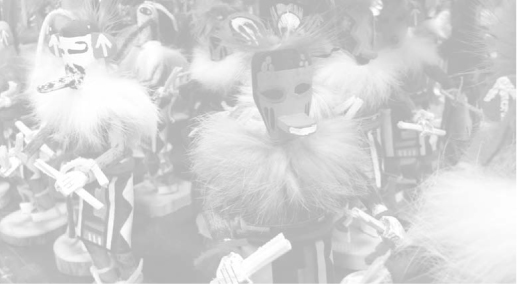Although evidence—some of it controversial—of a human occupation of North America in the Paleolithic age exists, the people we refer to as “Native Americans,” or “Indians,” seem almost certainly to have begun their migration to North America from northeast Asia by way of the land bridge across the then-dry Bering Strait by about 10,000 B.C.E. These people gradually made their way over the centuries into various parts of the continent and continued into Meso and South America. By the time of Columbus and the conquistadors of the fifth and sixth centuries, North American Indians, like their southern neighbors, were peoples, numbering in the millions, of many “nations” and languages. The last arrivals in the part of North America that is now the United States were the Athabaskan people, known to us as the Navajo (Diné) and Apache, who did not make their way to the southwest until about 1400 C.E. Many Native Americans of the pre-Columbian period were hunter-gatherers with no written languages. Some—especially in Mesoamerica—gradually established cities. Others, like the pre-Pueblo and Pueblo peoples of what is now the southwestern United States, emerged into agricultural communities. As written language did not exist in Native North America, history was passed down orally and is sometimes difficult to differentiate from myth.


